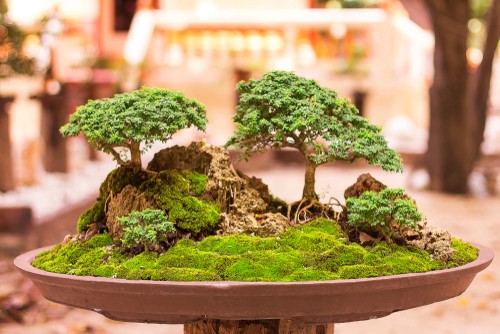Hey there! Have you ever seen those tiny trees that look like real big trees? Those are called Bonsai. Let’s dive into the world of Bonsai art and learn how to start your own Bonsai journey!

Credit: www.facebook.com
What is Bonsai?
Bonsai is the art of growing tiny trees. These trees look like big, old trees but are small enough to fit in a pot. The word “Bonsai” means “planted in a container” in Japanese.
Why is Bonsai Art Special?
Bonsai art is special because it combines nature and creativity. You get to shape and care for a tree, making it look beautiful. It’s like a living piece of art!
History of Bonsai
The history of Bonsai goes back over a thousand years. It started in China and then became popular in Japan. Now, people all around the world enjoy Bonsai.
Chinese Beginnings
In China, Bonsai was called “Penjing.” It was a way to create miniature landscapes. These landscapes included trees, rocks, and water.
Japanese Influence
When Bonsai reached Japan, it became more about the trees. The Japanese focused on making the trees look old and wise. This is the Bonsai art we know today.

Credit: www.linkedin.com
Getting Started with Bonsai
Ready to start your Bonsai journey? Here are some steps to help you begin:
- Choose the right tree.
- Get the right tools.
- Learn how to care for your Bonsai.
Choosing The Right Tree
Not all trees are good for Bonsai. Here are some beginner-friendly trees:
- Ficus
- Juniper
- Chinese Elm
- Japanese Maple
These trees are easy to care for and look great as Bonsai.
Getting The Right Tools
You’ll need some tools to care for your Bonsai. Here are the basics:
- Bonsai scissors
- Wire cutters
- Pruning shears
- Root rake
- Watering can
These tools will help you shape and care for your tree.
Caring For Your Bonsai
Caring for a Bonsai is like caring for a pet. You need to water it, feed it, and keep it healthy.
Watering
Watering is very important. Make sure the soil is always moist, but not too wet. Check your Bonsai every day to see if it needs water.
Feeding
Bonsai trees need food to grow. Use a special Bonsai fertilizer. Feed your tree once a month during the growing season.
Pruning
Pruning helps your Bonsai keep its shape. Use your Bonsai scissors to trim the leaves and branches. Do this every few weeks.
Wiring
Wiring helps you shape the branches. Wrap the wire around the branches and bend them into the shape you want. Be gentle so you don’t break the branches.
Common Bonsai Problems and Solutions
Sometimes, your Bonsai might have problems. Here are some common problems and how to fix them:
| Problem | Solution |
|---|---|
| Yellow leaves | Check watering and sunlight |
| Leaf drop | Check for pests and proper care |
| Weak growth | Use fertilizer and proper sunlight |
Bonsai Styles
Bonsai trees can be shaped in different styles. Here are some popular Bonsai styles:
- Formal Upright: The tree grows straight up.
- Informal Upright: The tree has curves and bends.
- Slanting: The tree slants to one side.
- Cascade: The tree grows down like a waterfall.
- Forest: A group of trees planted together.
Benefits of Bonsai
Growing a Bonsai tree has many benefits. Here are some reasons why Bonsai is awesome:
- Relaxing: Caring for a Bonsai helps you relax.
- Creative: You can shape and design your tree.
- Educational: You learn about plants and nature.
- Beautiful: Bonsai trees make your home look nice.
Frequently Asked Questions
What Is Bonsai Art?
Bonsai art is the practice of growing miniature trees in containers.
How Do You Start Bonsai?
Start bonsai by selecting a young tree and pruning it to maintain its small size.
What Are The Best Bonsai Trees For Beginners?
Ficus, jade, and juniper are great for beginners.
How Often Should I Water My Bonsai?
Water your bonsai when the soil feels slightly dry.
Conclusion
Bonsai art is a wonderful hobby. It’s fun, creative, and relaxing. With the right tree, tools, and care, you can grow your own beautiful Bonsai. So why wait? Start your Bonsai journey today!
